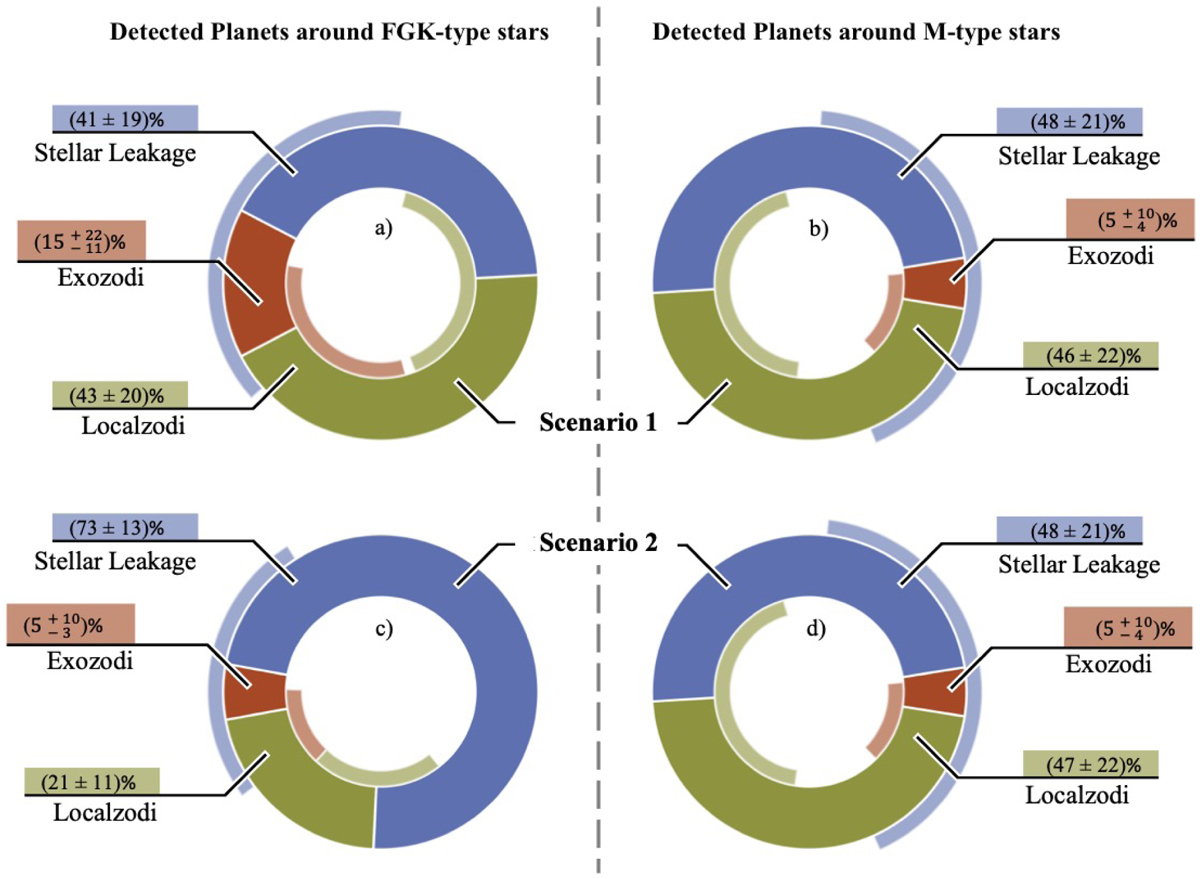Fig. D.1

Download original image
Donut charts illustrating how the main noise terms considered in our simulations (stellar leakage and noise from the thermal emission of the local and exozodiacal dust disks) contribute to the overall noise budget for the detected planets. The left column shows the results for planets detected around FGK stars and the right column for planets detected around M stars. The top row is for reference case scenario 1 and the bottom row for reference case scenario 2. The numbers correspond to the mean relative contribution of the various noise terms to the total noise per detected planet averaged over all planets. The quoted uncertainties are the corresponding standard deviations (graphically indicated by the colored arcs inside and outside of the donuts). For M stars, noise from exozodiacal dust disks is basically negligible, and stellar leakage and noise from the zodiacal dust disk contribute equally to the total noise in both scenarios. This trend is generally the same for FGK stars in scenario 1, even though the relative share of exozodi noise is larger. For scenario 2, however, stellar leakage clearly dominates the noise budget of planets around FGK stars.
Current usage metrics show cumulative count of Article Views (full-text article views including HTML views, PDF and ePub downloads, according to the available data) and Abstracts Views on Vision4Press platform.
Data correspond to usage on the plateform after 2015. The current usage metrics is available 48-96 hours after online publication and is updated daily on week days.
Initial download of the metrics may take a while.


